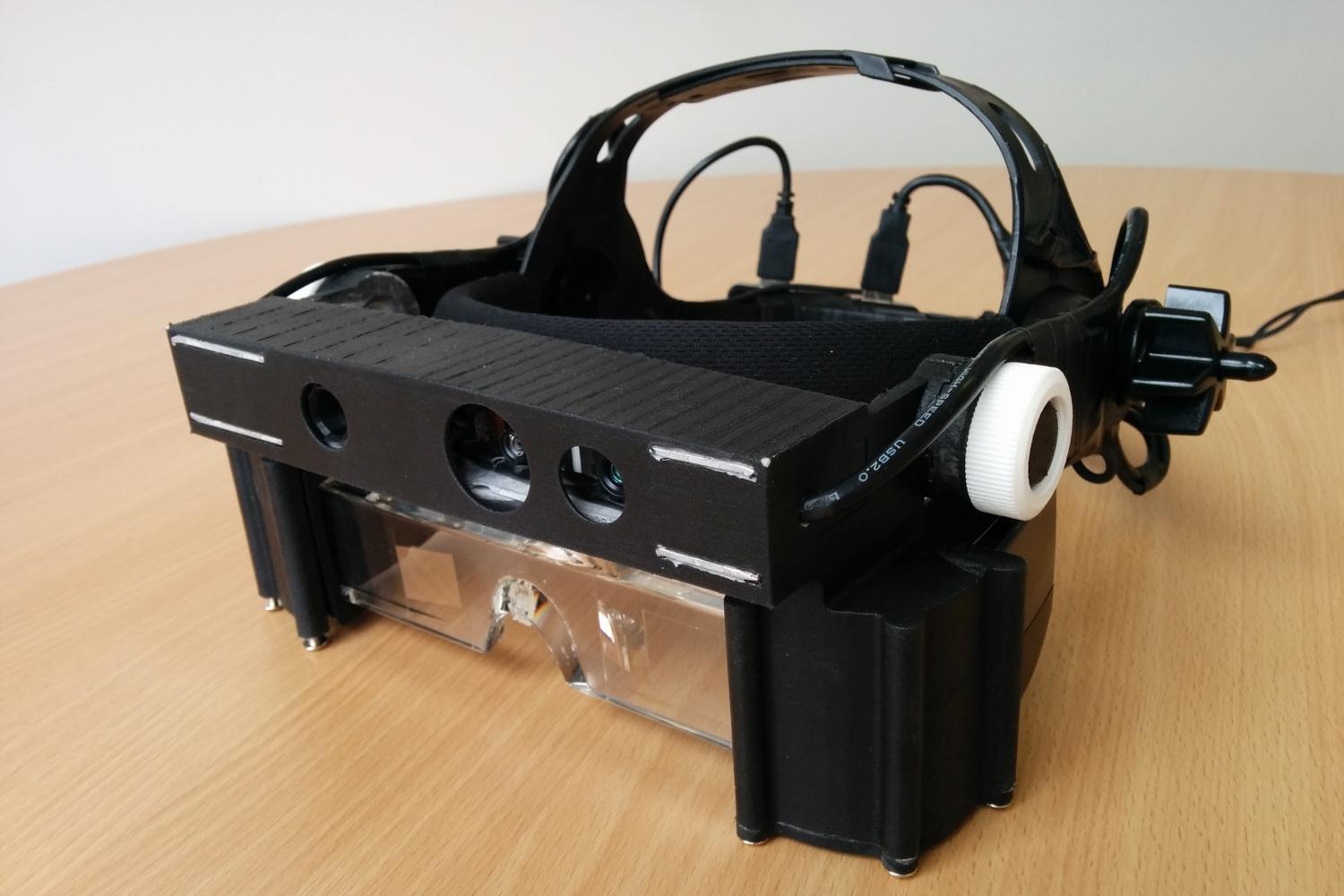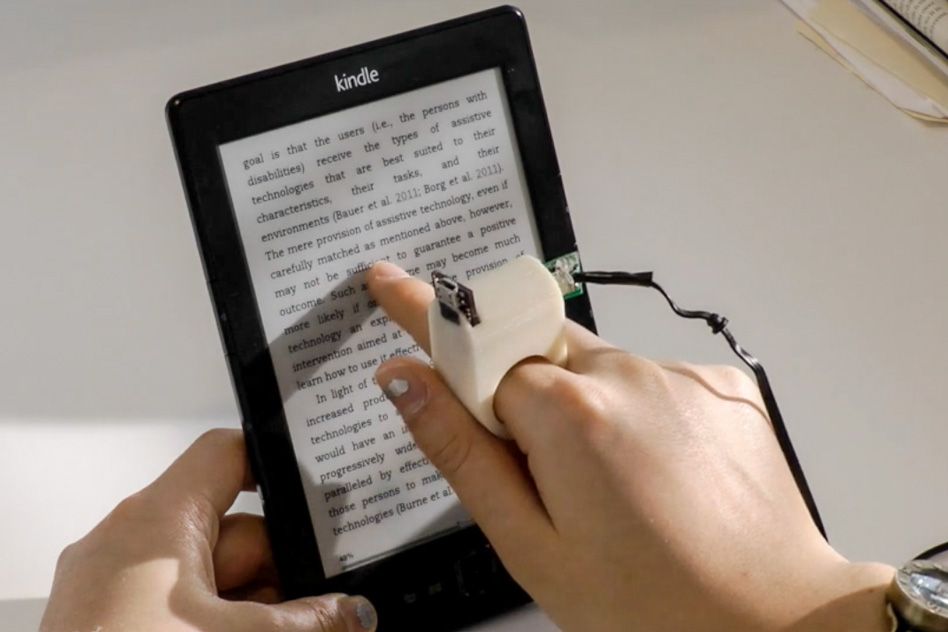Screen Readers for the Blind: Essential Solutions for Digital Access
Screen Readers for the Blind: Essential Solutions for Digital Access
Blog Article
Empowering Freedom With Assistive Innovation for the Blind
The combination of assistive modern technology into the lives of individuals with aesthetic impairments represents a considerable advancement in advertising self-reliance and self-sufficiency. From innovative screen readers to advanced wise canes, these tools not only enhance day-to-day navigating and interaction yet also empower individuals to engage meaningfully in numerous elements of life. As we explore the myriad advantages and real-world applications of these innovations, it becomes crucial to examine the underlying factors that add to their effectiveness and the capacity for future advancements in this vital area.
Overview of Assistive Technology

The development of assistive innovation is grounded in concepts of inclusivity and empowerment. Innovations in software application, hardware, and sensory enhancements provide customers with choices tailored to their details demands. From screen visitors that convert text to speech, to responsive tools that communicate details with touch, these tools transform the method individuals engage with their environments.
Along with functional applications, assistive technology fosters higher social addition and participation in different markets, consisting of education and employment (Screen readers for the blind). As r & d proceed to advance, the possibility for assistive technology to even more boost the lives of visually damaged individuals stays promising, leading the means for a much more equitable society where everyone can flourish
Kinds Of Assistive Tools
A range of assistive gadgets have actually arised to support individuals with visual impairments, each designed to fulfill details needs and boost daily functioning. These gadgets vary from low-tech remedies to state-of-the-art innovations, giving diverse choices for customers.
Low-tech gadgets include magnifiers and large-print products that help in reading and writing. Braille devices, such as Braille slates and stylus pens, make it possible for responsive reading and communication. Positioning and movement help, like white canes, aid customers browse their environment securely.
On the higher end of the spectrum, electronic zoom systems and display viewers use significant support. Digital magnifiers permit individuals to expand text and photos on displays, while display visitors convert digital web content right into manufactured speech, promoting access to details on computer systems and smartphones.
Smart device applications also play an essential role, supplying functions like text acknowledgment and navigating aid. Wearable modern technology, such as clever glasses outfitted with increased reality, is emerging as an appealing tool to improve situational understanding.
Benefits of Assistive Technology
The assimilation of assistive innovation dramatically improves the quality of life for people with visual problems. These modern technologies encourage customers by promoting self-reliance, enabling them to browse their settings more successfully and carry out day-to-day jobs with higher ease. For circumstances, display viewers and zoom software application enable individuals to access electronic info, promoting academic and expert chances that might have previously been out of reach.
Furthermore, assistive devices such as clever canes and general practitioners applications give real-time navigation support, enhancing movement and safety. This boosted freedom not only boosts self-confidence however also urges social engagement, enabling customers to participate even more completely in their neighborhoods.
Assistive technology additionally promotes interaction, helping users link with others with voice acknowledgment and text-to-speech applications. This capacity is vital for keeping connections and accessing vital info.
In addition, the customization options readily available with lots of assistive modern technologies make certain that individuals can tailor gadgets to their specific demands, further improving use and effectiveness. In general, the benefits of assistive modern technology for people with aesthetic impairments are profound, advertising a more inclusive culture where everyone can pursue their goals and aspirations.
Study and Success Stories
Highlighting the transformative impact of assistive technology, numerous situation studies illustrate how people with visual disabilities have successfully integrated these tools into their day-to-days live. One engaging instance entails a college student who made use of display reading software to browse scholastic materials and online sources successfully. This technology not only promoted her education and learning yet also improved her self-confidence in participating in discussions and team tasks.
One more situation research study includes a professional who uses a smart device application created for navigation and item recognition. By utilizing this application, he has actually restored autonomy in both his personal and workplace, allowing him to commute separately and engage with colleagues better.
Additionally, a senior citizen shared her experience with braille e-readers, which enabled her to access a substantial selection of literature and stay connected with her community with book clubs.
These success stories underscore the critical role of assistive innovation in cultivating self-reliance, enhancing lifestyle, and advertising social assimilation for individuals with visual problems (AI-powered visual aids). By accepting these cutting-edge tools, users can conquer challenges and seize possibilities Resources that contribute to their expert and index personal fulfillment

Future Trends in Assistive Technology
Development in assistive technology is positioned to redefine the landscape of assistance for people with aesthetic impairments. Emerging patterns stress the assimilation of man-made knowledge (AI) and device learning, which enhance the capability of tools that assist with navigating and information access. As an example, AI-driven applications are currently capable of analyzing visual information in real-time, making it possible for individuals to engage with their atmosphere more separately.
In addition, the growth of wearable technology is advancing swiftly. Smart glasses equipped with increased truth (AR) can supply audio descriptions of environments, changing exactly how customers connect with public areas. These gadgets not only promote freedom however likewise foster social addition.
In Addition, the Net of Things (IoT) is making homes smarter, permitting for smooth connectivity between assistive gadgets and everyday appliances. This connectivity empowers customers by enabling automated reactions and voice-activated controls customized to specific demands.
Verdict
To conclude, assistive innovation plays an essential function in empowering people with visual problems by enhancing their freedom and involvement with their surroundings. The varied variety of applications and devices available not just assists in navigation and interaction but likewise advertises social integration and opportunities for professional and personal growth. As advancements proceed in this field, the possibility for boosting the lifestyle for those with aesthetic problems will certainly increase, fostering greater freedom and empowerment.

Report this page